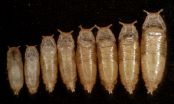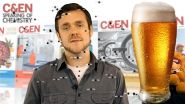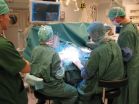INFORMATION:
Link to paper: http://dx.doi.org/10.1155/2014/246049
Study maps how city neighborhoods affect diabetes risk
2014-11-25
(Press-News.org) PHILADELPHIA (Nov. 25, 2014) - As the linked epidemics of obesity and diabetes continue to escalate, a staggering one in five U.S. adults is projected to have diabetes by 2050.
Ground zero for identifying ways to slow and stop that rise is Philadelphia, which has the highest diabetes rate among the nation's largest cities. For public health researchers at Drexel University, it is also a prime location to learn how neighborhood and community-level factors -- not just individual factors like diet, exercise and education-- influence people's risk.
A new Drexel study published this month in the journal Advances in Preventive Medicine adds new insight into the role of the physical and social environment on the risk of diabetes, zip code by zip code throughout the city. The researchers report that age-adjusted prevalence of diabetes in adults aged 18 and older in the city increased significantly between 2002 and 2010. Having diabetes is a strong risk factor for heart disease, even more so in minorities. Living in a disadvantaged neighborhood may play a critical role in a person's risk of the disease, accounting for about 12 percent of the difference in risk between otherwise-similar groups.
Philadelphia is often referred to as comprising a patchwork of neighborhoods. As a result of this city-wide patchwork, "people who live in the same general area have huge variations in socioeconomic environment," said Longjian Liu, MD, PhD, an associate professor and interim chair of the Department of Environmental and Occupational Health in Drexel's School of Public Health. Liu was lead author of the new study. This report was coauthored by Ana E. Núñez, MD, a professor and associate dean for urban health equity, education and research in Drexel's College of Medicine. "Philadelphia also has the worst health status among 67 counties in Pennsylvania."
The communities people live in contribute to wellness or illness. To evaluate the health impact of disadvantaged urban communities, Liu and Núñez developed an indicator of people's physical and social environment (PSE) based on their answers to certain questions on a large region-wide health survey. These questions asked about the availability of healthy food, use of local recreational facilities, helpfulness of neighbors and other factors, in addition to poverty level. The survey also asked more than 17,000 participants who lived in 46 Philadelphia zip codes about personal factors that affected their risk of diabetes. These questions included whether they were overweight or obese, their physical activity, fruit and vegetable intake, age, sex, race/ethnicity and smoking status.
Liu and Núñez found that scores for the physical and social environment varied widely across neighborhoods. The neighborhoods with worse PSE statuses had a higher prevalence of diabetes. In areas where residents had higher rates of overweight and obesity or lower education attendance, there were also higher rates of diabetes. Between the survey periods in 2002 and 2010, the number of neighborhoods with higher rates of diabetes increased substantially.
Using statistical models, the researchers determined that about 12 percent of the risk of diabetes correlated with neighborhood PSE factors when adjusted for respondents' age and sex -- meaning they would expect diabetes rates to drop by 12 percent if the neighborhood environment were improved. Another nearly 12 percent of risk correlated with education when adjusted for respondents' age and sex. Excess weight (overweight or obese) and race/ethnicity still remained larger contributors to the odds of diabetes.
"Too often, we focus exclusively on the individual in solving the problem. Here we found that we also need to focus on the healthiness of the community if we want to improve overall health and ultimately decrease health care costs" Núñez said.
"We want to stop the epidemic of diabetes and eliminate health disparities in communities," Liu said. He noted that although the risk of diabetes develops from an interaction between genes, lifestyle and environmental factors, the disease can be largely prevented by influencing its modifiable risk factors. To do so, we need to critically look at health policies that reduce risk at a larger community level. Working towards improving the health quality of an entire neighborhood or city shows promise in helping to reduce the risk of disease.
ELSE PRESS RELEASES FROM THIS DATE:
International team reveals barriers to public health data-sharing; life-saving solutions
2014-11-25
PITTSBURGH, Nov. 24, 2014 -Barriers to the sharing of public health data hamper decision-making efforts on local, national and global levels, and stymie attempts to contain emerging global health threats, an international team led by the University of Pittsburgh Graduate School of Public Health announced today.
The analysis, published in the journal BMC Public Health and funded by the Bill & Melinda Gates Foundation and the National Institutes of Health (NIH), classifies and examines the barriers in order to open a focused international dialogue on solutions.
"Data on ...
Body size requires hormones under control
2014-11-25
The proper regulation of body size is of fundamental importance, but the mechanisms that stop growth are still unclear. In a study now published in the scientific journal eLife*, a research group from Instituto Gulbenkian de Ciência (IGC), led by Christen Mirth, shed new light on how animals regulate body size. The researchers uncovered important clues about the molecular mechanisms triggered by environmental conditions that ultimately affect final body size. They show that the timing of synthesis of a steroid hormone called ecdysone is sensitive to nutrition in the ...
Feeling -- not being -- wealthy drives opposition to wealth redistribution
2014-11-25
People's views on income inequality and wealth distribution may have little to do with how much money they have in the bank and a lot to do with how wealthy they feel in comparison to their friends and neighbors, according to new findings published in Psychological Science, a journal of the Association for Psychological Science.
"Our research shows that subjective feelings of wealth or poverty motivate people's attitudes toward redistribution, quite independently of objective self-interest," says psychological scientist and study co-author Keith Payne of the University ...
Why fruit flies could lead to better beer (video)
2014-11-25
WASHINGTON, Nov. 25, 2014 -- Your beer may attract annoying fruit flies, but listen up before you give them a swat. Researchers found the yeast cells in beer are producing odor compounds -- acetate esters -- that lure flies and that could lead to the best beer you haven't even tasted yet. This week's Speaking of Chemistry explains why. Check it out at http://youtu.be/HQNlGuZvCvA.
Speaking of Chemistry is a production of Chemical & Engineering News, a weekly magazine of the American Chemical Society. The program features fascinating, weird and otherwise interesting chemistry ...
Virtual money: User's identity can be revealed much easier than thought
2014-11-25
Bitcoin is the new money: minted and exchanged on the Internet. Faster and cheaper than a bank, the service is attracting attention from all over the world. But a big question remains: are the transactions really anonymous? Several research groups worldwide have shown that it is possible to find out which transactions belong together, even if the client uses different pseudonyms. However it was not clear if it is also possible to reveal the IP address behind each transaction. This has changed: researchers at the University of Luxembourg have now demonstrated how this is ...
Few operations for epilepsy despite their safety and efficacy
2014-11-25
The study at Sahlgrenska Academy, University of Gothenburg, was based on the Swedish National Epilepsy Surgery Register, which includes all cases since 1990. The researchers reviewed data for the 865 patients who were operated on at Sweden's six epilepsy surgery clinics from 1996 to 2010.
The purpose of surgery is to enable a person with severe epilepsy to be free of seizures or to reduce their frequency to the point that (s)he can enjoy better quality of life.
Downward trend
Only 3% (25) of the patients suffered lasting complications. A comparison with a previous ...
Researchers find way to turn sawdust into gasoline
2014-11-25
Researchers at KU Leuven's Centre for Surface Chemistry and Catalysis have successfully converted sawdust into building blocks for gasoline. Using a new chemical process, they were able to convert the cellulose in sawdust into hydrocarbon chains. These hydrocarbons can be used as an additive in gasoline, or as a component in plastics. The researchers reported their findings in the journal Energy & Environmental Science.
Cellulose is the main substance in plant matter and is present in all non-edible plant parts of wood, straw, grass, cotton and old paper. "At the molecular ...
'Dramatic' early phase 1 results for AG-120 in IDH1 mutated AML
2014-11-25
Results presented November 19 by University of Colorado Cancer Center investigator Daniel Pollyea, MD, MS, at the 26th European Organisation for Research and Treatment of Cancer Symposium in Barcelona show "extremely promising" early phase 1 clinical trial results for the investigational drug AG-120 against the subset of patients with acute myeloid leukemia (AML) harboring mutations in the gene IDH1. The finding builds on phase 1 results of a related drug, AG-221, against IDH2 mutations, presented at the most recent meeting of the American Association for Cancer Research. ...
Johns Hopkins scientists link gene to tamoxifen-resistant breast cancers
2014-11-25
After mining the genetic records of thousands of breast cancer patients, researchers from the Johns Hopkins Kimmel Cancer Center have identified a gene whose presence may explain why some breast cancers are resistant to tamoxifen, a widely used hormone treatment generally used after surgery, radiation and other chemotherapy.
The gene, called MACROD2, might also be useful in screening for some aggressive forms of breast cancers, and, someday, offering a new target for therapy, says Ben Ho Park, M.D., Ph.D., an associate professor of oncology in the Kimmel Cancer Center's ...
Policing Canada in the 21st century: New policing for new challenges
2014-11-25
A new expert panel report, Policing Canada in the 21st Century: New Policing for New Challenges, released today by the Council of Canadian Academies, details the complexity and global nature of policing in the modern age. Overall, a 12-member Expert Panel determined that safety and security cannot just rest with Canada's policing services. Specialists, public and private security services, and other first responders all have a vital role to play in an interconnected safety and security web. This transition has already begun in Canada and around the world. A central challenge ...



